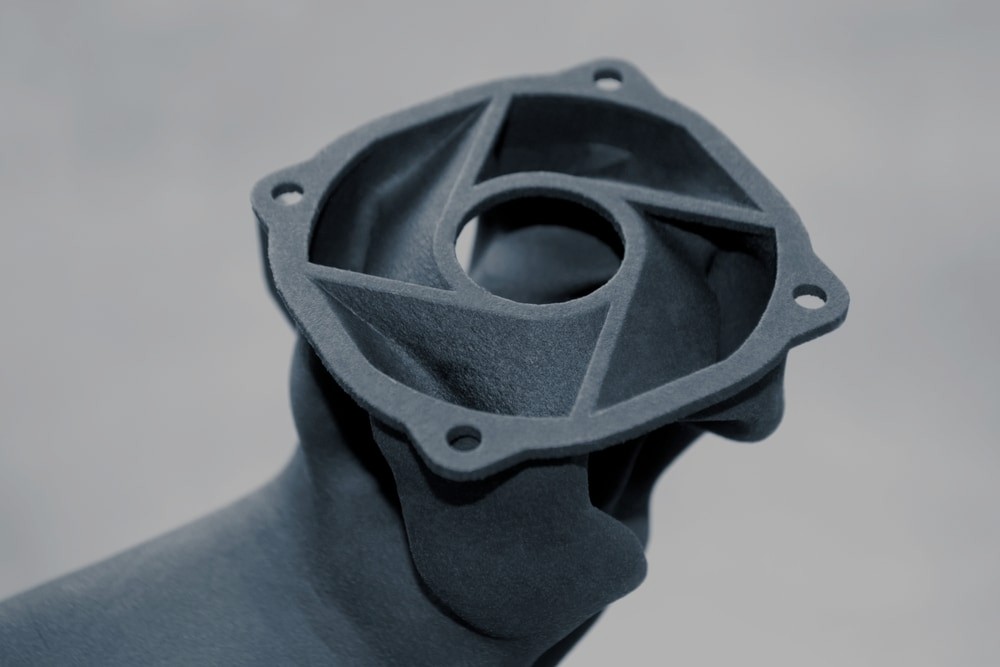

Previously published on fastradius.com on December 2, 2021
Nylon is a strong engineering plastic known for its resistance to heat, abrasion, friction, and chemicals. Nylon’s semi-crystalline microstructure provides an excellent rigidity to flexibility ratio, and it can be combined with or reinforced by other materials to improve its performance and characteristics. Nylon can be used in a variety of applications across sectors, from textiles to switch housings to food packaging.


Nylon is an excellent 3D printing material, but there are some key considerations and design tips you need to keep in mind to achieve the best results. Here’s everything you need to know about 3D printing with nylon, broken down by additive manufacturing process.
HP Multi Jet Fusion (MJF) technology prints quickly, captures the more intricate details of your design, and offers high dimensional accuracy. During this process, the MJF printer distributes a layer of powder onto the building platform. Then, a chemical fusing agent is sprayed on top of each new layer of powder, helping the powder absorb energy from the printer’s infrared light and form the final part.
There are a few key considerations for 3D printing nylon with MJF:
In addition, make sure your design includes enough space between features and avoid designing large or flat parts when using nylon for powder-bed additive manufacturing processes. If you don’t, your final part will be susceptible to warp.
Though nylon and nylon-based composites are best suited for additive manufacturing processes like MJF and Selective Laser Sintering (SLS), you can also 3D print nylon using fused deposition modeling (FDM). With FDM, the nylon filaments are melted and the molten material is extruded through a nozzle onto the platform. The part is then built layer by layer.
When 3D printing nylon filament, keep in mind that:
Also, nylon absorbs a lot of moisture from the air, which can lead to poor layer adhesion, surface roughness, tiny holes, and bubbles. Special steps must be taken to keep nylon material moisture-free in order to avoid these issues.
Keeping these tips and design considerations in mind can help you create functional 3D printed nylon parts. If you plan to use nylon for your next 3D printing project, consider working with an experienced manufacturer to simplify and accelerate the process and ensure the best results.
When you partner with SyBridge, our team of design experts will make sure your design is optimized for manufacturing and print your part using the latest additive technology. Ready to 3D print high-quality nylon parts quickly and cost-effectively? Contact us today to get started.
Forget typical cycle times. We're pushing the boundaries of conformal cooling. While traditional approaches deliver…
Forget typical cycle times. We're pushing the boundaries of conformal cooling. While traditional approaches deliver…
From left to right: Brayden Janak (apprentice); Logan Vifaquain (CNC machining, Programming and CMM); Ron…
SyBridge Technologies is proud to announce we have been awarded the 2023 General Motors Supplier…
Today, designers and engineers are accustomed to working with digital tools in their day-to-day jobs.…
Optimizing Your Injection Molding Process for Cost-Effective Manufacturing Excellence In today’s competitive landscape, manufacturers are…